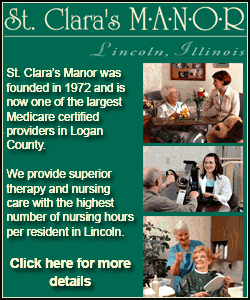|
 "These are awkward discussions," says Dr. Allen Lichter of the American Society of Clinical Oncology, which is writing the guidelines. "At least we can bring this out in the open." "These are awkward discussions," says Dr. Allen Lichter of the American Society of Clinical Oncology, which is writing the guidelines. "At least we can bring this out in the open."
It's a particular issue for patients whose cancer can't be cured but who are seeking both the longest possible survival and the best quality of life
-- and may be acutely aware that gaining precious months could mean bankrupting their families.
The prices can be staggering. Consider: There are two equally effective options to battle metastatic colon cancer, the kind spreading through the body
-- but one costs $60,000 more than the other, says Dr. Leonard Saltz of Memorial Sloan-Kettering Cancer Center.

What's the difference? The cheaper one, irinotecan, causes hair loss that makes it impossible for people trying to keep a job to hide their cancer treatment, he explains. The pricier oxaliplatin can cause nerve damage in hands and feet that might make it a worse option for, say, a musician or computer worker.
Saltz offers a tougher example: A drug for pancreatic cancer -- an especially deadly cancer with few treatment options
-- can cost $4,000 a month. Yet while Tarceva has offered some people remarkable help, research suggests that extra survival on average is a few weeks.
"Is it a good investment, a high-risk investment, or buying a lottery ticket?" is how Saltz puts these choices.
Drug prices are a growing issue for every disease, especially for people who are uninsured. But cancer sticker shock is hitting hard now, as a list of more advanced biotech drugs have made treatment rounds costing $100,000, or even more, no longer a rarity. Also, patients are living longer
-- good news, but meaning they need treatment for longer periods. The cost of cancer care is rising 15 percent a year, Lichter
notes

Make no mistake: Some of these newer drugs have greatly helped some patients
-- Gleevec, for example, has revolutionized care for a type of leukemia -- and the prices reflect manufacturers' years of research and development investment.
Also, drug companies do donate a certain amount of medication to prescription-assistance programs that provide them for free to patients who otherwise couldn't pay. Since 2005, nearly 5 million people
-- cancer patients and people with other diseases -- have been matched to such programs through the drug industry's "Partnership for Prescription Assistance."

But few patients get a Gleevec-style home run, and there's very little research that directly compares competing treatments to guide cancer patients on which might offer the best shot at survival for the money.
"As long as a therapy provides a benefit, it will tend to be offered to patients. Whether it's a small benefit or a moderate benefit, it may be offered with the same level of enthusiasm," says Dr. Neal J. Meropol of Philadelphia's Fox Chase Cancer Center, who is leading the panel writing ASCO's new guideline on how to weigh treatment costs.
[to top of second column] |

The idea: treat cost essentially as another side effect to weigh in choosing a therapy. Meropol has watched patients do those calculations on their own, like the colon cancer patient who asked to switch from oral chemo to cheaper but more laborious intravenous chemo, or the woman who refused a pricey anti-nausea drug that would make her chemo more bearable.
Even if doctors want to discuss cost, they may not know it -- it's not included in treatment standards. At a meeting of the standard-setting National Comprehensive Care Network earlier this month, Sloan-Kettering's Saltz and other doctors urged adding chemo prices to those treatment guidelines.
"If there's a need to spend it, let's talk about it. If we can do it just as well less expensively, I think doctors should know that and be able to make a decision," Saltz says.

Even the well-insured are feeling the bite as patients are having to shoulder a higher portion of the bill.
When Medicare began its Part D prescription coverage, retiree Helen Geiger of Whiting, N.J., paid for a premium plan and put it to good use when she was diagnosed with multiple myeloma, a blood cancer. She said the plan listed the cost of her dose of Thalomid at $5,500 a month but her copay was $60 a month.
In renewing the prescription plan last year, the 71-year-old Geiger didn't notice that Thalomid coverage had been changed. It now was classified a specialty drug, costing a $1,051 monthly copay that she couldn't afford. She went several months without the anti-cancer pills, as her doctors at Philadelphia's Fox Chase Cancer Center and her family appealed to the insurer and then scoured charities in hopes of finding her free or cheaper drug.
"You don't need this kind of stress when you're sick," says Geiger, who finally stumbled onto a prescription assistance program that provided her free medicine.
___
On the Net:
Prescription assistance programs: http://www.pparx.org/
[Associated
Press; By LAURAN NEERGAARD]
Lauran Neergaard covers health and medical issues for The Associated Press in Washington.
Copyright 2008 The Associated
Press. All rights reserved. This material may not be published,
broadcast, rewritten or redistributed.
 |